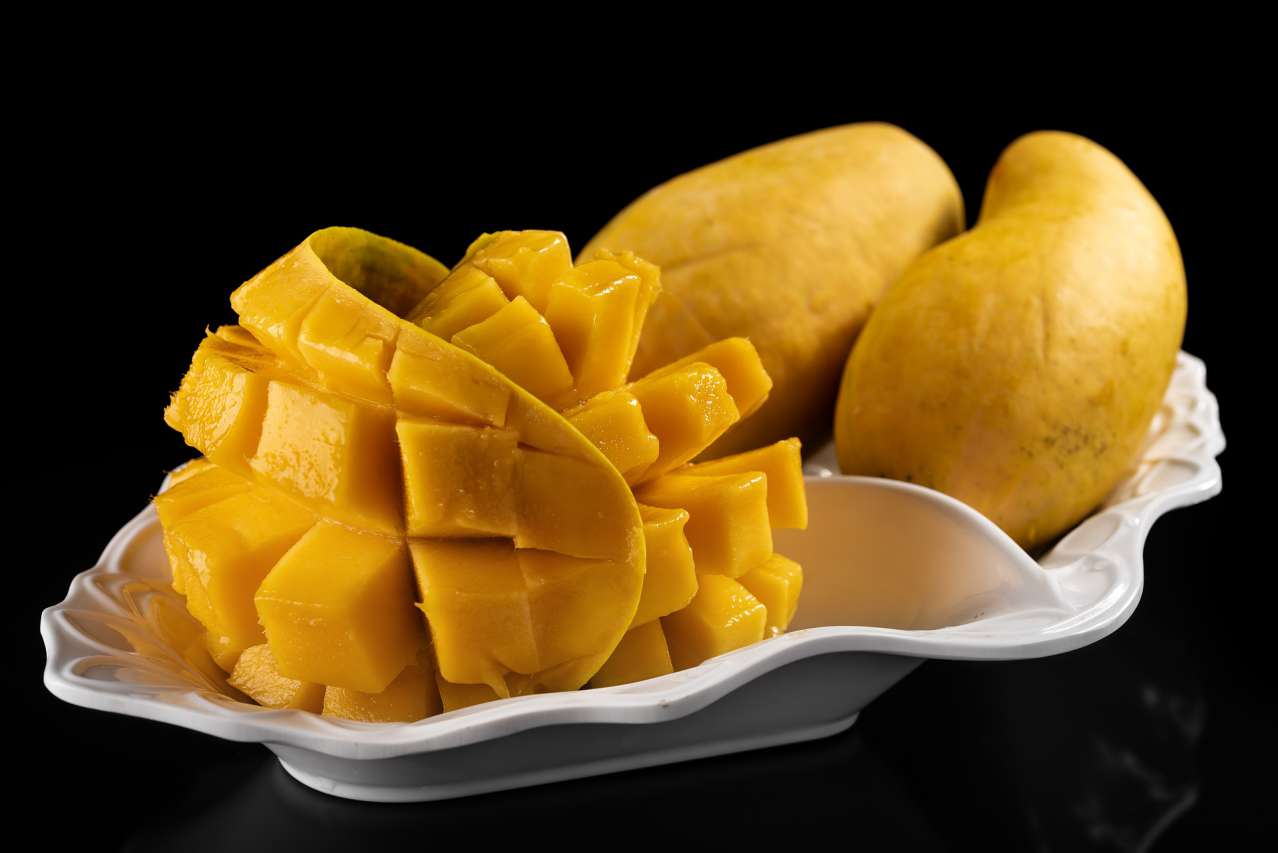The fruit is sweet, with a slight sourness, reminiscent of a mixture of peach and pineapple. The pulp is juicy, fibrous, fragrant.
Mango benefits
Mango is rich in vitamins B, C, A, E, as well as magnesium, calcium, iron and zinc. Regular consumption of the fruit will help take care of the heart, improve the health of the eyes and hair, and strengthen the immune system. Scientists recommend that mango be included in the diet if there is no allergy to the fruit.
When not to eat mango
Mango is contraindicated in case of individual intolerance, exacerbation of pancreatitis and renal pathologies. There is only one conclusion - everything is good in moderation. For adults, no more than two fruits a day, and for children, one is enough. Very small - in a small amount in the form of mashed potatoes.

What does a ripe mango look like
Ripe mangoes have juicy, fibrous, yellow or orange flesh that separates easily from the pit. Such a mango has a very pleasant fruity aroma and a sweet taste with a slight sourness, in which notes of peach, melon and apricot are felt.
How to eat raw mango
Mango halves are turned inside out and the resulting rhombuses of pulp are separated with a knife. If the fruit is a little overripe, then before peeling the mango, it is washed, cut in half, and the pulp is eaten with a spoon. Mango was recognized as the richest exotic fruit in vitamins.
What a delicious way to eat mango
The fruit can be used to make salads, smoothies, smoothies, chia puddings, and refreshing desserts. With mango, unusual spicy sauces and marinades are obtained, which successfully set off the taste of meat and poultry and give dishes oriental notes.












